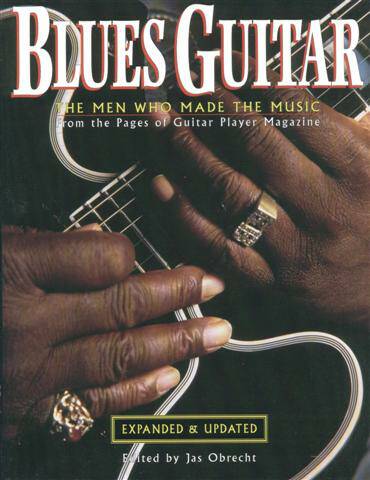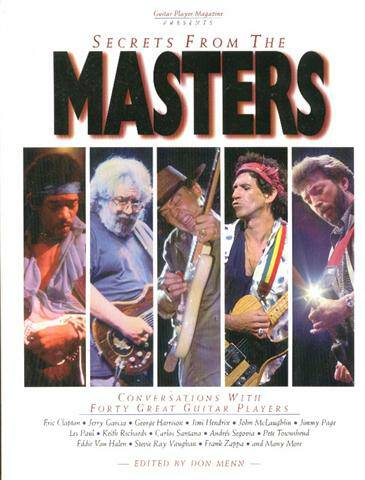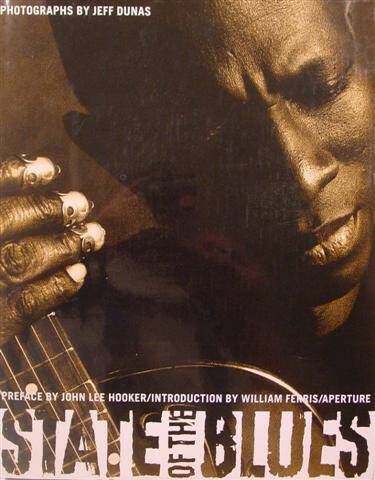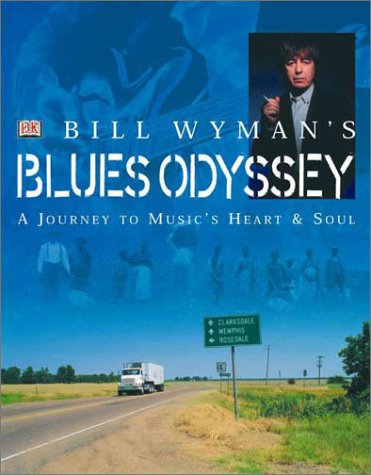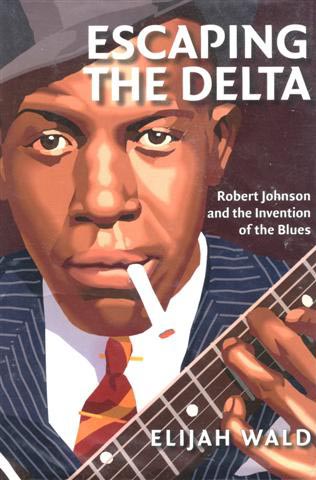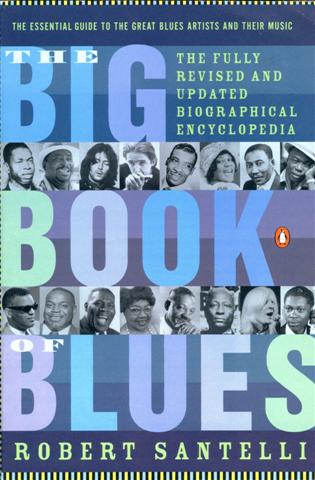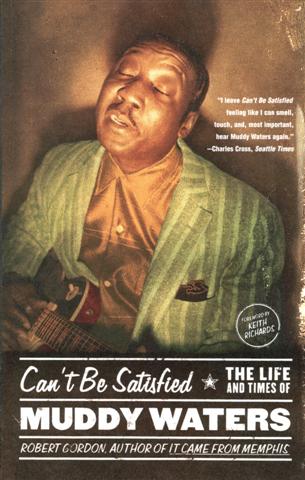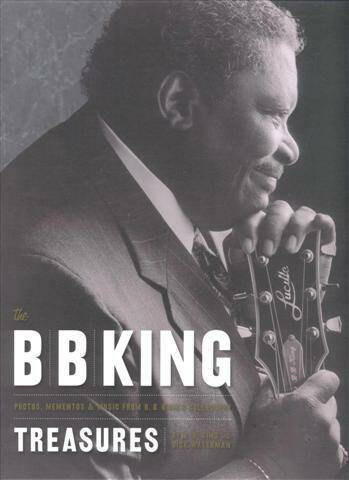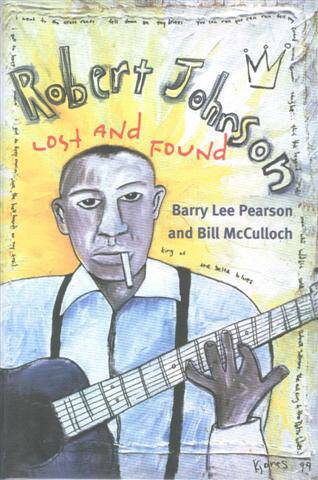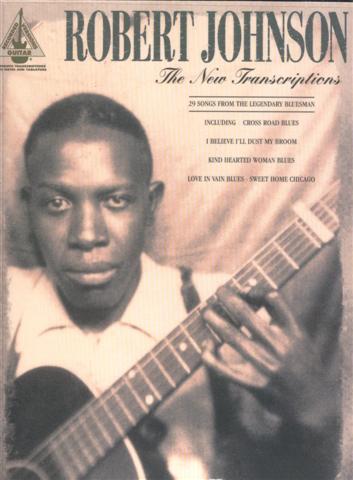SUGGESTED READING

Blues Traveling is the book that really got me rolling. I had been captivated by the Mississippi delta for a number of years, but had only taken photos of old barns, cotton shacks, gins and the like. Then, in this book, Steve Cheseborough directed me to all the good stuff. I was off and running.
I highly recommend this book for anyone contemplating a pilgrimage to the holy sites of Mississippi blues, within or outside of the Delta. Mr. Cheseborough identifies the location of all the sites and groups them by town and area, throwing quite a bit of blues history into the mix and noting non-blues sites of interest along the route. Even if you don't plan to take the trip, it's a great read. If you can take the trip, do so. This book will lead you on a mystical scavenger hunt on which you'll collect photographs and memories.
Thank you, Mr. Cheseborough. I'd never have found all this stuff without you.
ISBN 1-57806--650-6
I borrowed Blues Guitar from the public library. I hadn't read much of it when I knew I had to order a copy. It contains biographies of many of the old country blues artists such as Robert Johnson, Johnny Shines, Robert Jr. Lockwood, Skip James, Rev. Gary Davis, Mississippi Fred McDowell, Son Thomas, R.L. Burnside and others. It has interviews, orginally published in Guitar Player Magazine, with about 20 different blues artists, from Muddy to Buddy. This book is a great read and the cover photo of B.B. holding Lucille is a real eye-catcher.
ISBN 0-87930-292-5
Escaping the Delta has changed forever how I view the early days of the blues and its place in our culture. Mr. Wald's command of musicology is simply amazing. I will read this book at least once more within the next year or so. It provides a clear look at the Americans who were buying blues records in the early twentieth century and thus shaping the evolution of the blues. Mr. Wald even takes Robert Johnson's recordings and analyzes each one of them in the order in which they were recorded. This is the most scholarly work on the blues that I've read to date and has an extensive bibliography.
ISBN 0-06-052423-5
This is an extensive collection of guitar player interviews that were orginally published in Guitar Player Magazine; Duane Allman, Chet Atkins, Chuck Berry, Eric Clapton, Les Paul, Eddie Van Halen, Carlos Santana, Jimmy Page, Mark Knofler, Ry Cooder, Duane Eddy, Stevie Ray Vaughan, Jimmy Hendrix, Joe Satriani, Billy Gibbons, Allan Holdsworth, Jerry Garcia, Larry Carlton, Jeff Beck and more, many more.
ISBN 0-87930-260-7
State of the Blues is a wonderful collection of photographs of blues artists taken by Jeff Dunas. His artistry is apparent in every photograph. There must be over a hundred full-page photographs of blues artists all taken with the time and care evident in the photo of Keb'Mo' on the cover. There is also page after page of blues quotations, all interspersed with photographs from places like Chicago and the Mississippi delta. Prefaced by John Lee Hooker, this is a delightful book.
ISBN 0-89381-799-6
Music: John Lee Hooker with Carlos Santana, The Healer
In Blues Odyssey, Bill Wyman conclusively demonstrates that he can do much more than play bass for the Rolling Stones........as if that wasn't enough. This book is a pleasure to read with plenty of excellent photography. Mr. Wyman seems a bit challenged regarding Mississippi geography (A reference to West Point as a delta town comes to mind.), but one tends to forgive the Englishman for his confusion about small Mississippi towns. This book is also in DVD form (reviewed on the VIDEO page) containing quite a bit of excellent music not the least of which is provided by Mr. Wyman's own band, The Rhythm Kings.
ISBN 0-78948-046-8
The Big Book of the Blues is an excellent reference book. It includes more than 650 alphabetized biographies of blues artists including a discussion of the artist's style, his musical contributions and a list of essential listening recordings.
ISBN 0-14-100145-3
In my blues reading, I was frequently encountering references to, and quotations from, Robert Gordon's Can’t Be Satisfied. So, when I ran across it in the bookstore, I grabbed it. Mr. Gordon has more than adequate credentials and has thoroughly researched Muddy's life. Add his ability as a skilled writer and you have a book that truly is a wonderful read. All of Muddy's attributes are revealed as well as all of his warts. This book tells the whole story, beginning with Muddy Water (before Water was pluralized by Leonard Chess on a record label) being recorded by Alan Lomax at the Stovall Plantation commissary and ending with old men playing acoustic blues at 706 Maxwell Street in Chicago after Muddy's death. The notes in the back of this book are loaded with gems about Muddy and various other blues artists. I promise y'all, Can't Be Satisfied is a fascinating book.
ISBN 0-316-16494-1
PLANNED ACQUISITIONS ~
The Autobiography ~ Chuck Berry
King of the Delta Blues: The Life and Music of Charlie Patton ~ Stephen Calt and Gayle Dean Wardlow
Hellhounds on My Trail: The Afterlife of Robert Johnson ~ Stephen LaVere
I've had a copy of The Rolling Stone Jazz and Blues Album Guide for a number of years and would imagine that a newer edition is now available. This is a great reference book with many hundreds of jazz and blues biographies, each one accompanied by an extensive, if not complete discography (as of its printing). As an example, there are seventy entries in Frank Zappa's discography. The bibliography includes an extensive list with ratings of various anthology albums and a compendium of record label contact information. This book is almost eight hundred pages of small (but easy enough to read) type, jam-packed with information.
ISBN 0-679-76873-4
UP NEXT:
RECENT ACQUISITIONS ~
If one wished to choose one, and only one, book on blues history and musicology that was less than three hundred pages long and which provided the most complete overview of the history of the blues, its relation to American society and the people involved in its evolution, Deep Blues would be hard to beat. In my other readings, I have heard this work criticized for inaccuracy. Indeed, I found passages in this work that contradicted other works that I have read. But, that seems to be true for all works. The passages in Deep Blues which I believed to be of dubious accuracy involved insignificant points. And, I hasten to stress that, as regards their accuracy, I refer only to my personal opinion and that I do not consider myself an authority. This author, Robert Palmer (1945-1997), has given us an excellent, concise and insightful work on the history of the blues. He told me things of Charley Patton, Robert Johnson, Robert Nighthawk, Rice Miller, Robert Jr. Lockwood and many others that I have not read elsewhere. He pointed out differences in their styles, strengths and weaknesses of which I was unaware. If you are to read only one book on the blues, I recommend Deep Blues. If you do read this one, it'll be your Lays Potato Chip, baby: Bet'cha can't read just one.
ISBN 0-14-006223-8
This is a great book that really takes you back to the pre-WWII Mississippi blues world. Gayle Dean Wardlow is the man and Edward Komara contributes an excellent introduction and some well placed comments. I should have started doing what Mr. Wardlow has done at the same time he did, in the sixties. He is the blues tracker that Ace Atkins writes about. Chasin’ That Devil Music; Searching for the Blues takes you all over Mississippi and even into Louisiana and Alabama in search of obscure blues artists. At first I thought, “I've never even heard of these guys, so what’s the big deal?.” But, the next thing I knew, I was mesmerized. The story of these people is incredible and not all of them are obscure, either; this book has the most information on Charlie Patton and Willie Brown that I’ve read to date. I will certainly be obtaining a copy of King Of The Delta Blues: The Life And Music Of Charlie Patton which Mr. Wardlow co-authored. Chasin’ That Devil Music tells the story of how Mr. Wardlow tracked down all the people, information and documents necessary to acquire the facts he needed to piece together the stories of quite a number of blues figures. The book comes with a CD of wonderful, old, obscure blues tunes and interviews with people who knew these blues pioneers. I was thrilled to actually hear the voice of H.C. Speir, Ishmon Bracey and others. I read an interview online in which Mr. Wardlow said, “[T]he days of research are over, you can't find primary sources anymore, they're all dead. It's time to do the writing instead of the researching and I'll be doing a lot of that." It's sad for me to think that I have missed my opportunity. I’ll just have to wander along Mr. Wardlow’s trail, take photos of whatever I can find that’s still around and read his work.
ISBN 0-87930-552-5
Beale Black and Blue is an interesting account of Memphis' famous Beale Street, black America's main street, and its place in blues history. The first eighty pages are a well written history of politics, race relations and the civil rights struggle in Memphis. They contain one of the most in-depth descriptions of black life under the infamous Jim Crow laws in the forties and fifties that I have read. The remainder of the book, with direct quotes and biographical material, focuses on the lives of various bluesmen who are associated with Beale Street history. Margaret McKee and Fred Chisenhall were obviously able to interview many of the great old bluesmen before they died. The list includes Booker White, Furry Lewis, Sleepy John Estes, Big Joe Williams, Arthur "Big Boy" Crudup, Albert King, Muddy Waters, and others. It's a good read.
ISBN 0-8071-1886-9
In Robert Johnson Lost and Found, Barry Lee Pearson and Bill McCulloch examine the facts known about Robert Johnson's life and compare them to a number of different researched works on the subject. What emerges is that quite a bit of the popular belief about the man as a tortured soul who made a Faustian deal with the devil and was pursued by hellhounds was engendered by those works. The conclusions of those researchers are largely the result of minute psychoanalyses of the lyrics of two of his songs, ignoring the other twenty-seven. It's rather like concluding that Stephen King is a serial killer after reading Ride the Bullet. They did so simply because embroidering on that myth sold books. Once Pearson and McCulloch have stripped away the layers of onion, Johnson can be seen as a very gifted, fun-loving and ambitious artist with the strengths and weaknesses shared by a broad spectrum of humanity. This is verified by how he was remembered by other bluesmen who knew him, played with him and traveled with him. They admired the man and scoffed at the myth. Thus, we are shown that blues historians are not immune to the malady that plagues so much of the supposed academic world, shaping works to conform to or advance a personal or political/social agenda. I like Pearson and McCulloch's approach: Just the facts, ma'am.
ISBN 0-252-02835-X
Stephen Calt is an impressive blues historian. Time and again, I have found his writings referenced in works on the blues by other authors. He impresses me not just with his research and inclusion of pertinent facts, but with the depth of his insight. All of his formidable ability is brought to bear on his book, I'd Rather Be the Devil, Skip James and the Blues.
In many ways, Skip James doesn't fit the mold of the prototypical pre-WWII bluesman. James supported himself as a bootlegger, gambler and pimp rather than a bluesman. While he changed his location frequently, he was not a wanderer and had much more means than the typical itinerant bluesmen of the period, such as Big Joe Williams or Robert Johnson. Because of that fact, Mr. Calt’s description of James’ life provides a somewhat different view of a pre-WWII black man’s life in the delta than biographies of other blues figures. James was accomplished on both guitar and piano, accompanying himself on either instrument in his recordings. The son of a minister, James spent his life battling inner conflict between his religious beliefs and his chosen lifestyle. Mr. Calt delves deeply into this conflict and a myriad of other circumstances that contributed to Skip James’ life and music. When the blues revival of the 60s occurred, the problems James had with that conflict and with battling his own ego are succinctly described and their effects well portrayed. Stephen Calt has contributed another good book, enlightening, informative and enjoyable to read.
ISBN 13,1556527463
This book covers a lot of ground. Martin Scorsese Presents the Blues has articles and reminiscences written by a plethora of well-known personalities, within and outside of the blues community. There are pieces with authors as diverse as Eudora Welty who writes an account of seeing Fats Waller (whose identity is revealed by Peter Guralnick on page ten) in Jackson, Mississippi to Willie Dixon, who describes going to work at Chess Records. John Lee Hooker points out the commonality of spirituals and the blues while William Faulkner describes a Negro religious service. Robert Palmer remembers a Howlin’ Wolf performance in Memphis in 1965 and Christopher John Farley writes of blind bluesmen. Elmore Leonard expresses his appreciation for the blues in a captivating little piece named "Thank God for Robert Johnson."
As the dust jacket notes say, “This volume – a companion to the ground-breaking seven part documentary series, Martin Scorsese Presents the Blues, presents a literary sampler every bit as vibrant and original and diverse as the films and music that inspired it."
ISBN: 9780060525453
The location of the photo on the dust jacket of Blues Odyssey is on US Highway 49, just north of Tutweiler, MS. The sign in the foreground has been changed, but it's the same site.
SUGGESTED READING
SUPPORT
YOUR
LOCAL
LIBRARY!
